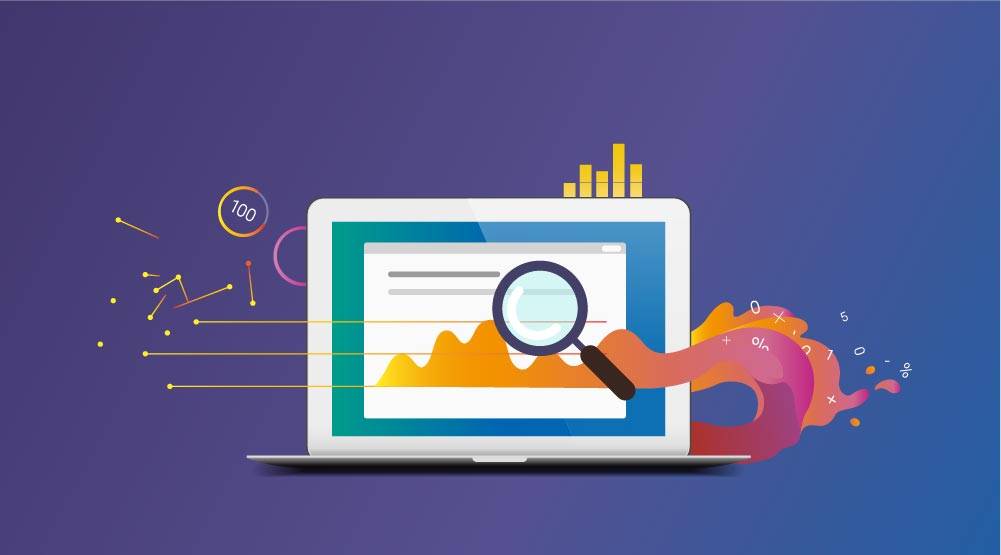8 Steps To Getting Started with Customer Profiles (Part 2)
(This blog post is Part 2 of our Data-Driven Marketing series - why not check out our Introduction to the Power of Profiles when you’re done with this one?)
Profiles are to digital marketing plans as milk is to the café latté.

What do I mean by this? Just that without profiles, chances are you’ll be left with an unexpected aftertaste - exactly like with a milkless latté.
Add to this the fact that 76% of consumers expect businesses to understand their individual needs, and the importance of customer profiles in data-driven marketing suddenly seems more vital than ever.
I’ve previously introduced you to the importance of profile marketing in another blog post. However, some claim that talk is cheap. So I thought I’d translate the importance of profiles into 8 descriptive action points.
No time to read now? Here are my key points:
• Since profile-based marketing takes time and energy, simplify things already by setting objectives and sketching out your ideal customer before you start.
• Knowing your customers is crucial: here, you should do it with data. Track their online behaviour, merge it with your legacy data and data from other sources.
• Discover your customers’ pain points and solve them by asking “why?”, not “what?”. (But careful: don’t try to solve everything at once!)
• If data is at the heart of your marketing activity, it should be the heart of your company culture as well.
• If you’re done with all this, you can finally reach the goal of all data-driven marketers: evolving into an omnichannel business.

1. Set Your Objectives
The first step to creating customer profiles is to map out your capabilities and possibilities in terms of money and technology. Keep in mind that the creation of customer profiles is a lengthy and resource-consuming process! Before you start on your quest, you need to think about the following: what are the main objectives of your digitised data-driven marketing efforts, and how can they align with your vision and goals?
2. Who’s Your Ideal Customer?
The next step in the process is to sketch out broad descriptions of who you think your ideal customer is. Even though this step is void of actual data, it’s still an important stepping stone for further analysis. By the end of the journey, you should be able to identify customer profiles based on demographics, psychographics and behaviour, and combine them with company interactions on the web.
But let’s not get ahead of ourselves – getting to know your customers is a long-term process that involves continuous data identification, review and analysis. One thing I can guarantee you is that your profiles will change throughout the process, so the chances that your initial ideal customers will represent the end product are slim to none (at this point).
3. Discover the Secrets of Online Behaviour…
You need to get to know your customers. Of course, I do realise that it’s basically impossible to get to know each and every one of them personally. However, you should try to get as close as you possibly can. And If you’re dealing with a mass market, with a myriad of potential customers, you need to ask yourself the question: what are customers doing right now in relation to my company?
I’d describe data’s role in marketing as a way to take valuable shortcuts towards understanding customer behaviour. Every single visit to your website creates footsteps in the sand that, if extracted, will tell you a tale of consumer behaviour and attitudes.
You should also log and merge online behaviour with your legacy data. Doing this will provide you with valuable insights as to how you should approach your customer profiles in the present and future. Who’s clicking on your online advertisements? And how are customers behaving in relation to your products? The outcome will surprise you!
4. … And Complement with Other Data Sources
Retrieved data of online behaviour is valuable. However, for a more personal view of your customers, you have to combine it with other sources of data such as your CRM, sales channel(s) or social media. If you define and extract the interactive patterns between your brand and the potential customers, the excerpt data will assist you in defining segments.

5. Replace the “What?” with “Why?”
Understanding your customers means understanding their pain points. Perhaps I should explain: a pain point is a real or perceived problem in the eyes of the customer. Your role as a business is to set out to solve (or at least relieve) these.
In the quest to find your customer’s pain points, you need to start asking “why?” rather than “what?”. It might seem like a small detail, but it will make quite a difference in the extent to which you truly understand the activity of your potential customers.
To ask “how” is merely to establish a certain state. To ask “why” is to attempt to get to the root of the problem. Use the following examples:
• Why is this a pain point?
• Why should we start with this pain point in particular?
• Why is this important to our business goals?
• Why will this pain point, if changed, generate a greater or faster value for us and our customers?
If you want to succeed in the coming era of personalised customer experience, you have to buckle down and try to answer the “why”-s. It’ll take time and hard work, but will most definitely pay off in the end.
6. Create a Company Centred on Analytics
A company culture is the consummation of shared values and norms held within an organisation. It’s created through a combination of formal documents and informal communication - like coworkers chatting in a coffee room.
An organisational culture is an organic phenomenon, but it can be influenced. If you want to create a profile-centric organisation, it is important that you make analytics the new norm.
I want to stress that this won’t happen with the snap of your fingers, so get that process of change going now!
Once you’ve extracted the data and created the outlines for your customer profiles, it’s important that everyone within the own organisation fully understands that customer profiles are a critical tool to help your business achieve its goals. The template or any other document holding your profiles should be easily accessible, and a quick check-up on them should be a part of your coworkers’ daily chores.
With the creation of a customer persona, you’re hedging your bets to ensure communicative consistency throughout your company (as well as laying the groundwork for your success!). Organising both individual and group efforts based on a code of consistency will ultimately elevate the chances of long-term customer growth and increase your chances of achieving your organisational goals.

7. Analyse Multiple Pain Points
Remember what I said about pain points? One other thing you should keep in mind is to tread lightly when you try to answer those “why”-s we talked about. Often, we tend to rush down the methodical railway in order to get to our end destination (i.e. the answer) more quickly. But this isn’t the right road to success.
You have to understand that the number of pain points for customers will often surpass the number one. Furthermore, you need to discern that they are interrelated. So address each pain point individually - but be aware that one pain point and one mode of communication will affect the other. If you question too many actions and analyse numerous pain points all at once, you will not know what data gives you the key to understanding which pain point.
If you uncover pain points through the analysis of data, a new world of understanding will reveal itself. You need to be flexible, and adapt quickly to the newly gained insights if you’d like to move forward. As tedious as it may seem: small steps is the way to ensure long-term success.
8. Evolve into Omnichannel
Congratulations! You’ve reached one of the goals of profile marketing – to successfully evolve into an omnichannel business. Once you’ve logged data that’s linked through your CRM-system and analysed the results of the pain points, you can connect with customers through mobile devices and apps.
By the time you’re familiar enough with your customers and have sketched up a rough picture of the profiles, add modules that enable communication and interaction. It’s an organic process, but even so, you mustn’t forget to continually identify, review and analyse the pain points. If you lose track, you may have difficulties in finding your way back.
Getting started with the creation of customer profiles can seem quite daunting and time-consuming. However, these 8 steps will give you a fighting chance of receiving market shares in the future. All you need to do know is get started!
With APSIS One, we’ll help you break the data out of its silo. The future is now - see it yourself today!
This article was originally published on 2017-04-21, last updated by Jess on 2020-06-22.



